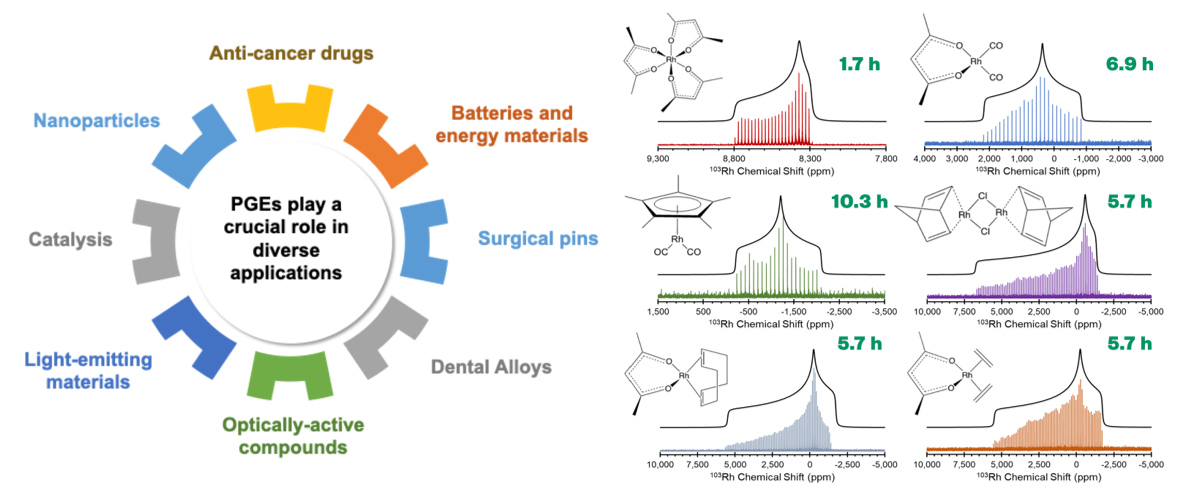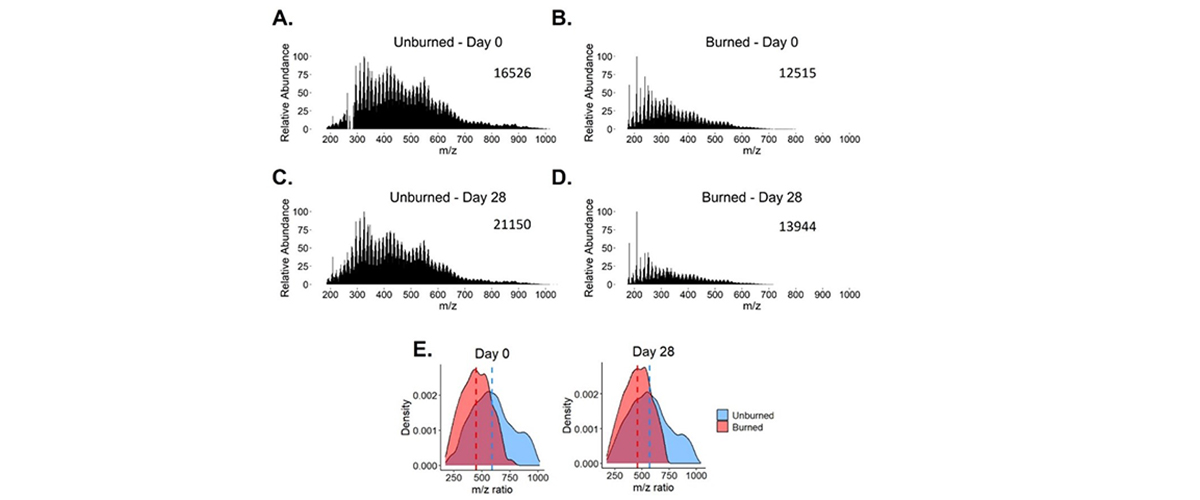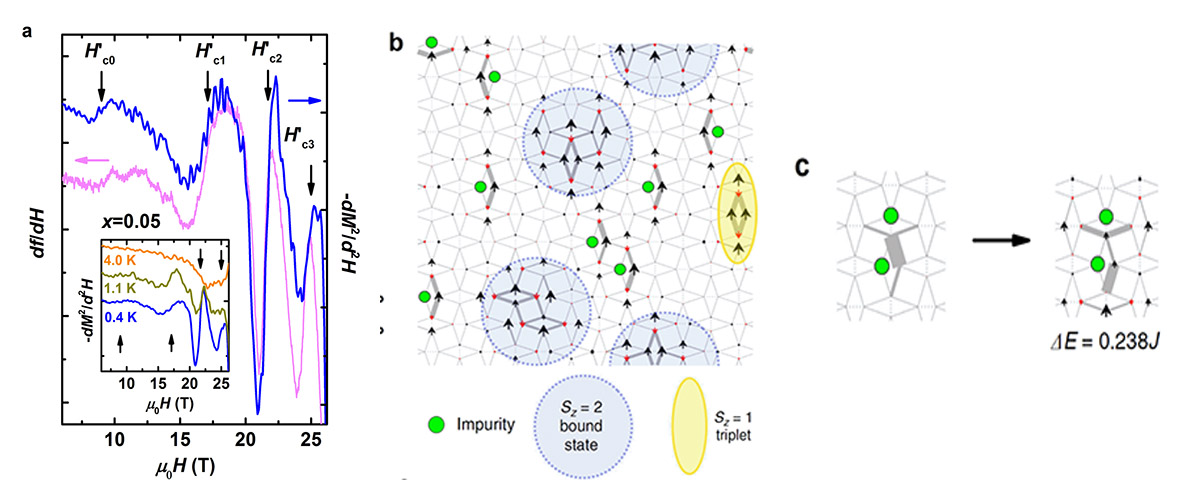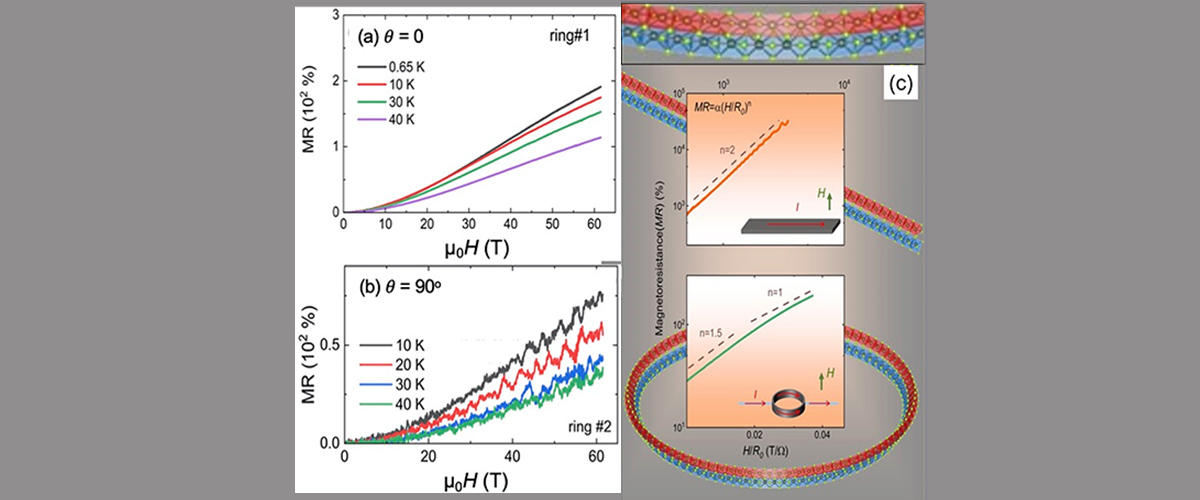What did scientists discover?
MagLab users have designed new techniques to acquire 103Rh solid-state NMR (ssNMR) spectra of a wide array of Rh containing materials to study their molecular structures – a feat previously thought to be nearly impossible.
Why is this important?
103Rh is very insensitive to NMR experiments, making 103Rh ssNMR spectra difficult to acquire. However, with new methods, MagLab users can now reliably acquire such spectra, which in combination with quantum mechanical calculations, give deep insights into molecular structure and chemical bonding, and provide unique spectral fingerprints for each Rh-containing material. These findings are valuable to many technologies including catalytic converters, electronics, and medical devices.
Who did the research?
Sean T. Holmes,1,2 Jasmin Schönzart,1,2 Adam B. Philips,3 James J. Kimball,1,2 Sara Termos,1,2 Adam R. Altenhof,1,2 Yijue Xu,2 Christopher A. O'Keefe,4 Jochen Autschbach,3,* and Robert W. Schurko1,2,*
1Florida State University; 2National MagLab; 3University at Buffalo; 4University of Windsor
Why did they need the MagLab?
The high fields of the 21.1T ultra-widebore NMR magnet and 36T Series Connected Hybrid magnets, in concert with our unique experimental probes, yield 103Rh NMR signals of unprecedented quality!
Details for scientists
- View or download the expert-level Science Highlight, Unraveling the Mysteries of the Platinum Group Elements with 103Rh Solid-State NMR Spectroscopy
- Read the full-length publication, Structure and bonding in rhodium coordination compounds: a 103Rh solid-state NMR and relativistic DFT study, in Chemical Science
Funding
This research was funded by the following grants: G.S. Boebinger (NSF DMR-1644779, NSF DMR-2128556); R.W. Schurko, J. Autschbach (DE-SC0022310); R.W. Schurko (NIH RM1 GM148766)
For more information, contact Robert Schurko.






